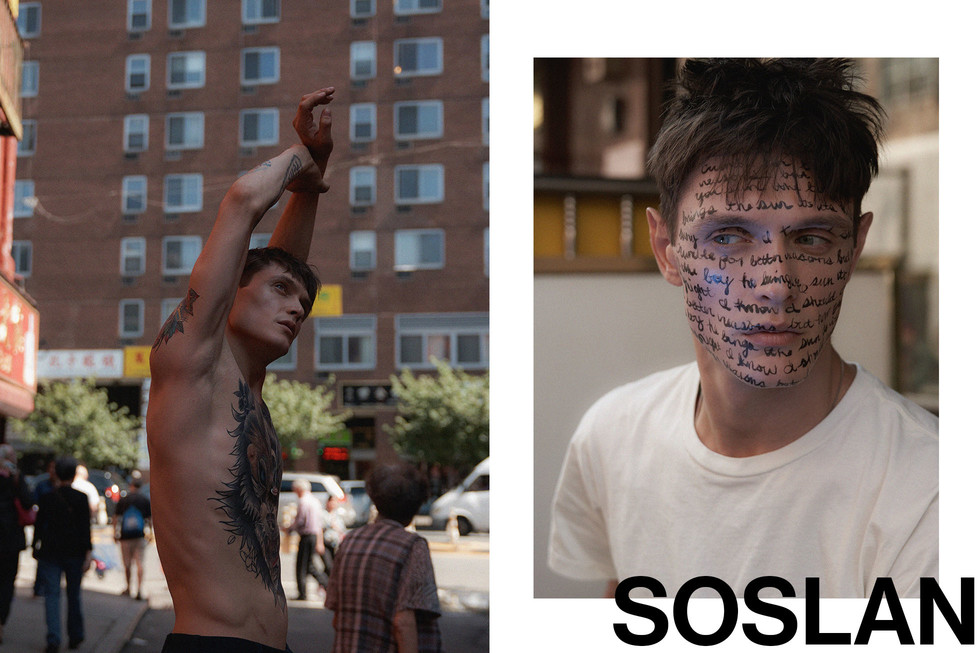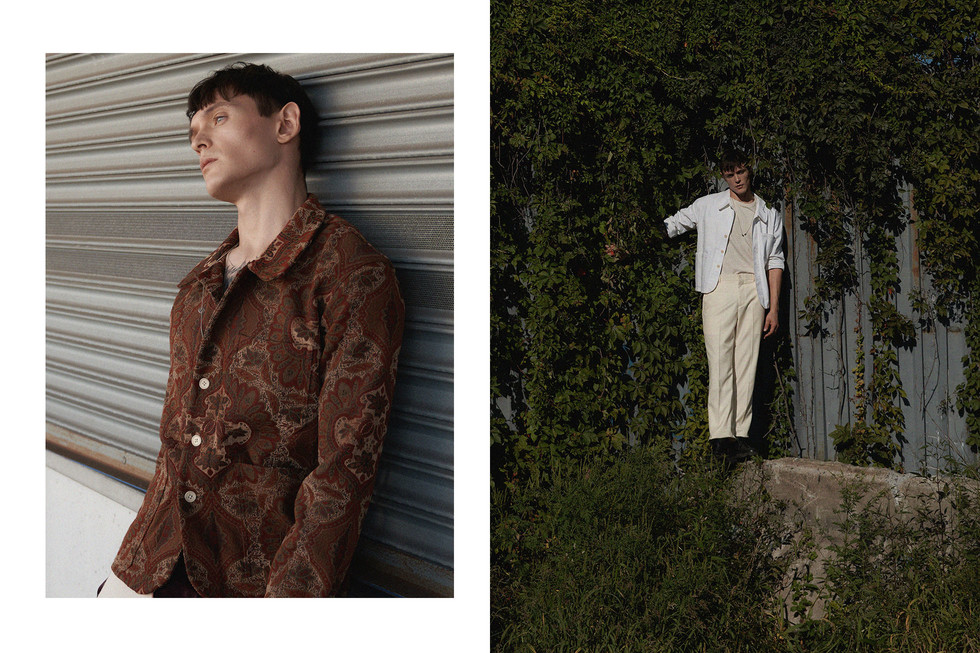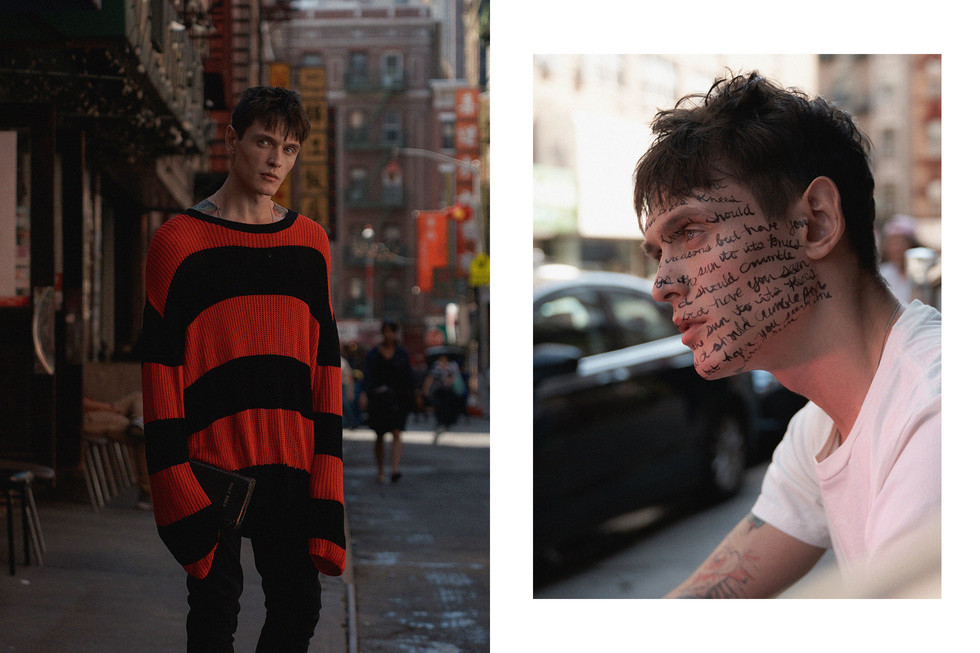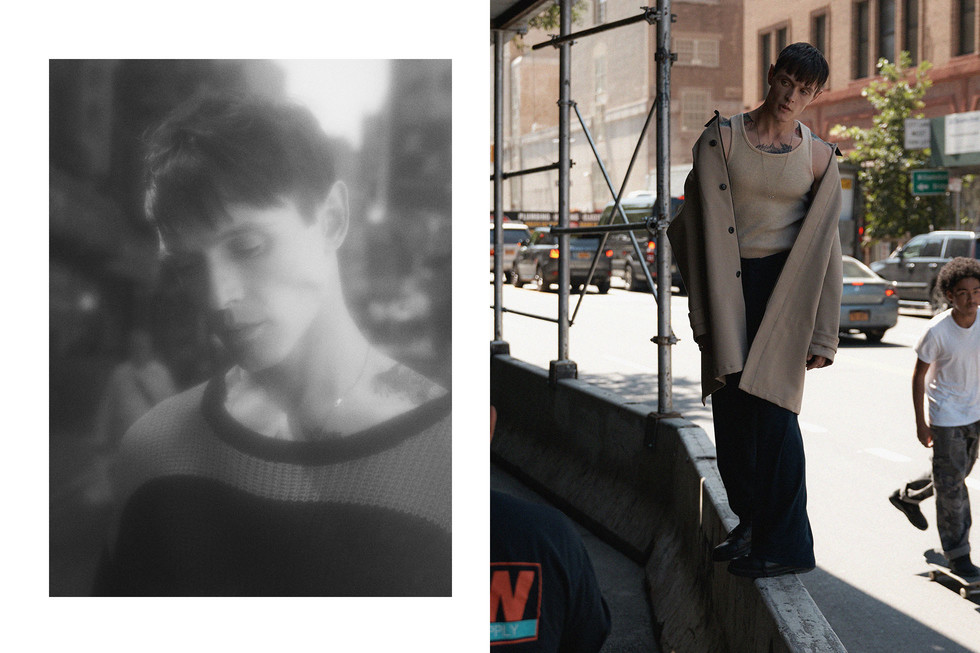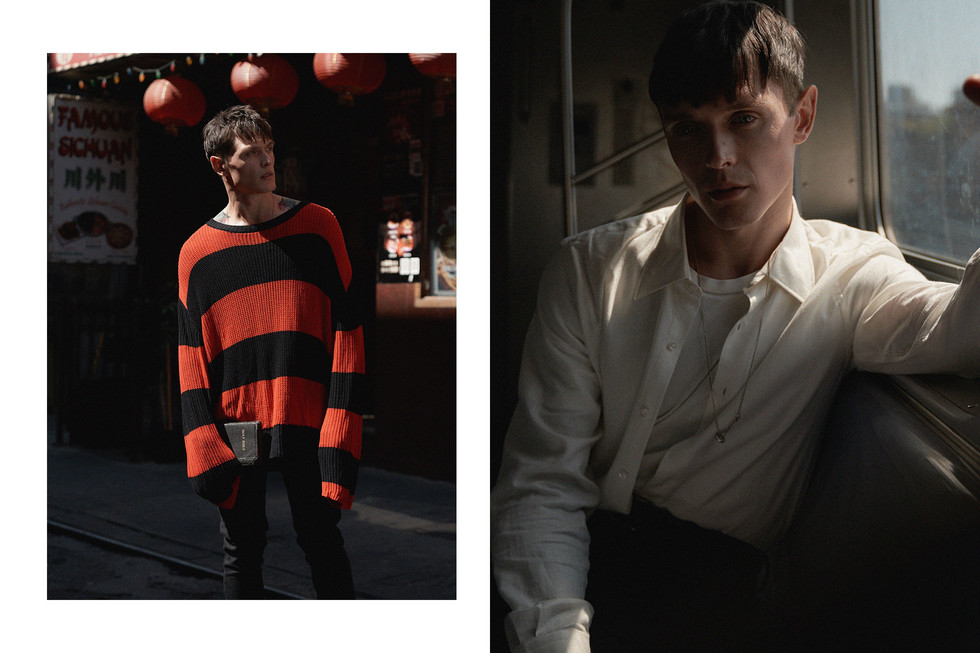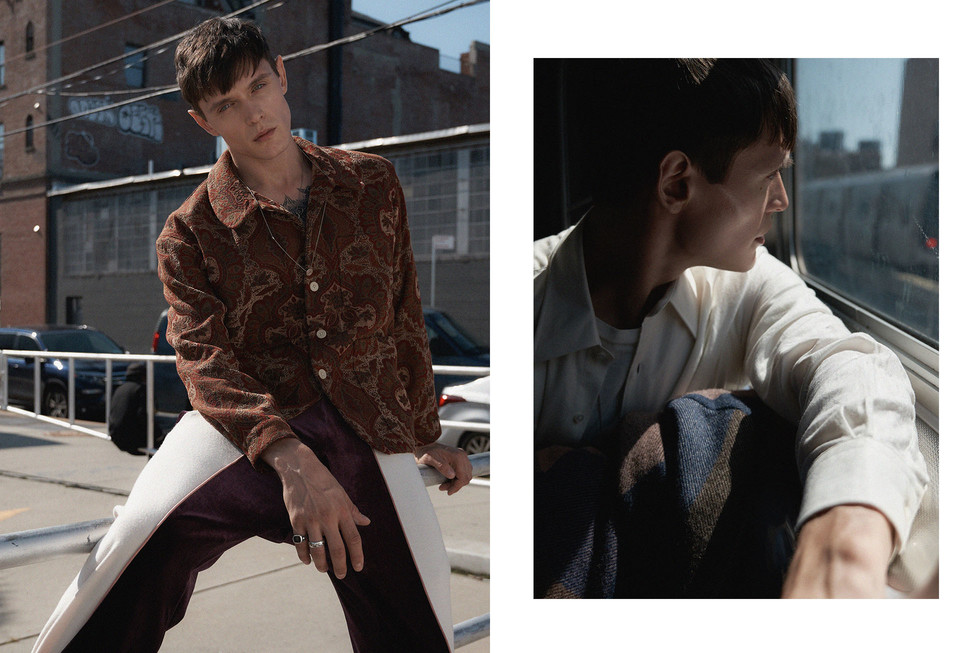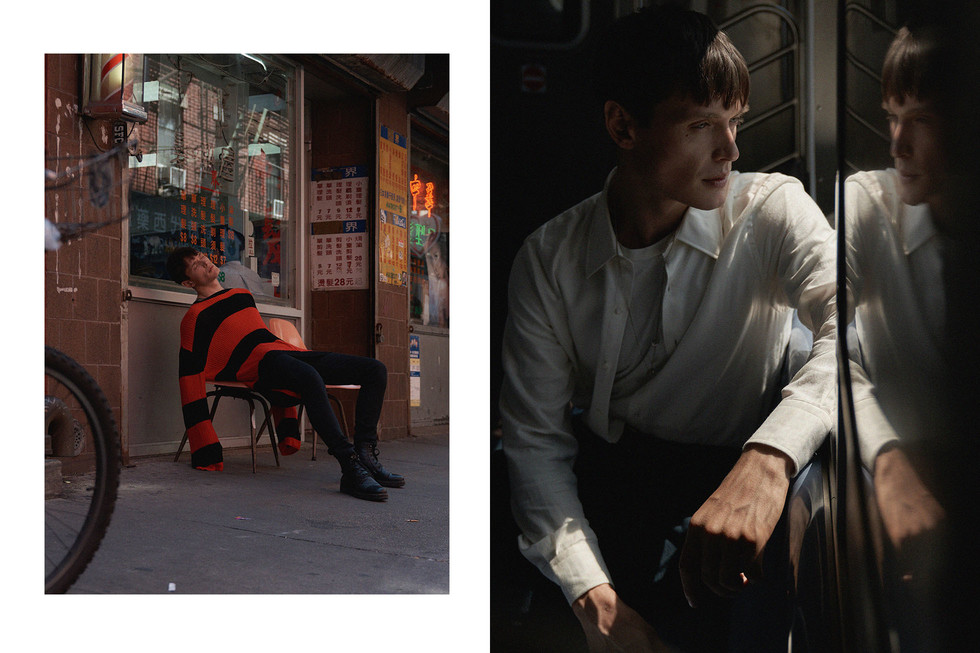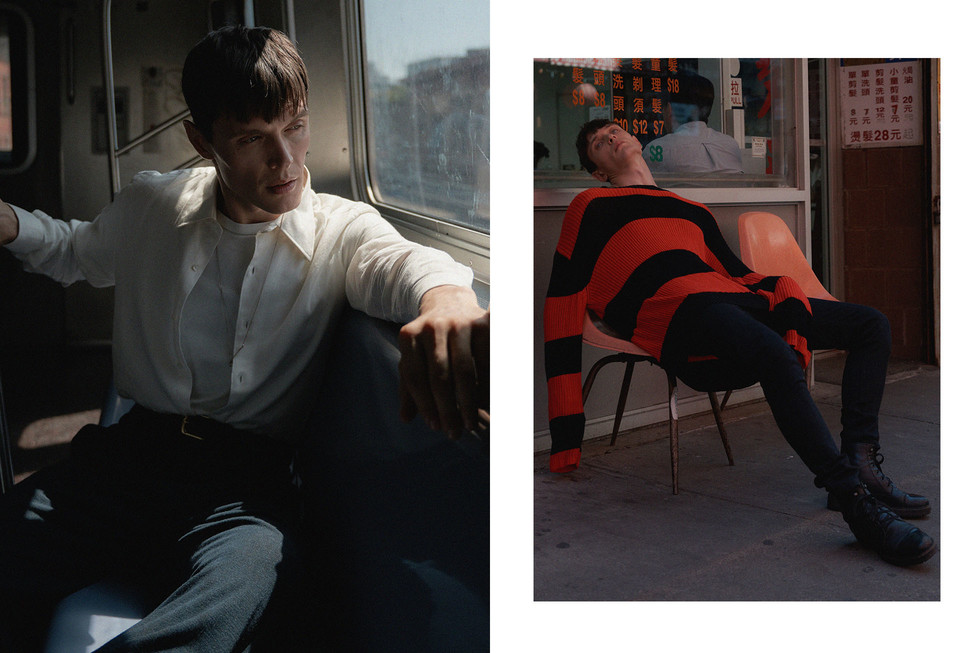MARTIN BERGSTRÖM X LAPPONIA: THE WORLD OF BARREN LANDSCAPE AND ORGANIC FUTURISM
Written by Ksenia RundinBy bringing his unique artistic vision to the prominent Finnish jewellery brand Lapponia, the Swedish designer Martin Bergström has now been inscribed into the history of Finnish cultural heritage. The Kuu collection, consisting of several unique pieces combined in multiple ways and inspired by Finland’s barren landscape with the bright moon shining over it, is a result of a modern dialogue between the designer’s organic futurism and Lapponia’s incredible heritage. Inspired by Björn Weckström’s earlier design, Martin Bergström creates his own emotional and abstract interpretation of jewellery as both a functional decorative piece and an art work.
The designer plays with futuristic character of the natural shapes by following the brutal forms of the Finnish landscape, and adds the intelligence of the modern technology by using his own two-dimensional sketches reshaped by 3D Technology. It seems that Martin Bergström with his ingenuity and digital curiosity, has broken the border between the past and future, creating a new story of jewellery design. While looking at the collection, I imagined Väinämöinen [an ancient Finnish Hero – K.R.] from The Kalevala playing the kantele and Princess Leia from Star Wars leading the operation to rescue Han. And it felt as the time was a mere illusion.
What is the collection inspired by?
The Kuu collection is partly inspired by Lapponia’s history. I admire a lot what Björn Weckström created during the 1960s and 1970s with his brutal style. Lapponia has probably changed its direction since then but I would like to bring it back to its brutal, organic and abstract aesthetics. I have studied their archive and also met Björn. My endeavor was to find a right approach, therefore I chose the moon concept as a part of the Lapland context with its barren landscape, moon and nature. These are what my starting point was.
What is the purpose of your collaboration with Lapponia?
The purpose is to take Lapponia into the contemporary times and to update it in accordance with my interpretation.
Lapponia has a long tradition of creating, where its sculptural design language is decisive. What do you, “an organic futurism” (translation K. R.), as you described yourself in an interview, have in common with Lapponia through the Kuu collection?
I have put my soul into this collection, what you as a designer must do. The whole collection is a kind of personal – my soul.
I have seen small prints/patterns integrated into the metal structure. What are those?
There is a casting structure on the jewellery what I integrated into the pieces, what was quite a long process. I had made a number of two-dimensional sketches, which were later scanned and processed by a 3D program. One jewellery can contain 10 different structures which I have painted and which later were minimized to the size of 0.5 mm and integrated into the pattern. It took a long time to perform that job but it was incredibly exciting to do that. It took over a year to get everything done.
Is it your first experience as a jewellery designer?
I have worked with jewellery a little bit before but this is the first time I do a whole collection. However, there is no difference in whether you do a single jewellery piece or a whole collection.
Do you see any connection between the jewellery collection and your textile creations?
Absolutely, my approach is the same in both cases.
Is it a certain method you apply?
I try to find a theme and put my soul into it. I tried to clearly see what I wanted to say and to look at it as a beauty of an art piece when adding such details as casting.
You have mentioned your studies of Lapponia’s archive. Do you have any favourite jewellery?
There are a few, especially Björn Wickströms 1960s and 1970s works. I also visited his home and saw his fantastic works. Furthermore, my intention was to integrate his works into my interpretation of the collection and what I think is Lapponia’s future direction. When it is not a museum but something alive, it is important to integrate different time periods into it and thereby take care of the heritage. In sixty years my current works will be old. Time passes quickly and when you are old, your works is what you have left as a part of your history. Therefore it is significant to care for your own history.
You have studied in Germany and I assume that the Bauhaus school has somehow left an impact on you. Can we see any traces of that in this jewellery collection?
Brutalism as such is a part of my interest and I could see it in the Finnish style and Finland. I also live in Finland half-time, as I live together with a Finn and I love Finland with its barren landscape and brutal character. These are things I feel I want to build my idea on. Thus, it is not that much about Bauhaus as such but the Brutalism that I am inspired by.
When it concerns your fashion design, who is your customer?
I work with different customers. Now I have now had my collection in the USA under soon two years. Bea Åkerlund takes care of my thing there. Then it is pretty much about me creating something less wearable and more as an art piece, like Lapponia, so you could have it on the wall. I see a tendency of people buying things and hang them on the wall instead of wearing when you can still choose both. The point is that you can have it hanging on the wall as an art piece. I think also that the customer I have today is the one who does not really concentrate on trends as such but buys something she/he likes.
Could you please say a few words on the sustainability aspect in the collection?
The silver used for the collection is silver that been recycled to the best possible extent, circa 75-80 percent. You cannot recycle 100 percent of silver. The gold used in the production is, however, 100 percent recycled. Thus, the sustainability aspect is significant there. Additionally, all the jewellery is produced at the factory in Helsinki. There is no production stage which is left out to someone else. Furthermore, jewellery produces always according to the sales prognoses, not more than is expected to be sold in order to prevent any possible waste. The rest is performed by order. There is also a safety aspect integrated into the production, where only professional jewellers work with it.
Do you and Lapponia have any plans to continue the collaboration?
Yes, sure! We have plans to continue our collaboration with jewellery.
If you, as a costume designer, would get a free hand, what film would you like to design costumes for, from any time period?
It is depends on what film and who are the actors. Nevertheless, it would be fantastic to work with Fellini [Federico Fellini (1920-1993), Italian film director and screenwriter – K.R.] or Bergman [Ingmar Bergman (1918-2007), Swedish film director, writer and producer]. Right now I do not have anyone in particular in my mind. I love old films, like L’Amore by Fellini. Sometimes you are born in wrong time. If I were born earlier, it would be fun to work with those two.
In some interview I have read that you also worked with haute couture. Could you name any fashion houses you worked with?
I have worked with patterns for one of those big haute couture fashion houses. When you have a contract with such a fashion house, you are bound by a confidentiality clause, what makes it impossible for me to give any names. I make scarves for them and I learn a lot there. You could actually recognise my ‘hand’ in those shawls.
Do you have a free hand while designing for the fashion house?
No, I receive a brief I have to follow. I love different types of commissions and this is one of many I have.
Your fashion city?
Helsinki.
On your webpage is stated that you work with ‘forgotten handicraft techniques to bring [your] composition alive’. Do you feel that you in a certain way work against artificial intelligence with its 3D technology in order to keep the old techniques alive?
I worked a lot with digital print, I work a lot with future technology but you always have to be aware of what you are doing concerning your own heritage. I love haute couture pieces but I also love the idea of doing those in a modern way. If you could work in 3D and perform an haute couture piece through a digital process by using for example 80 percent less water. Thus, I am working a lot with trying to find modern solutions to work with old handicraft techniques. I am a lecturer at Beckmans College of Design in pattern and there I work a lot with that vision.
What is the process around making the theatre costumes?
When I am working with theatre, I read the script first. However, I mostly work with dance and then it is the feeling in a dance which you work on together with the choreographer. My role there is more about fashion.
Could you say a couple of words of any of your future projects?
I work on two own projects now. Then there is an exhibition I will do in Moscow and I will tell about it when I know more about it and it becomes more official. I am also working on my next collection.
What is the theme of the collection?
I am working with memories, as my dog has passed away and I also have got a new puppy. It is a lot about life and death. In the beginning it was more about grief process, where I used to cry a lot. Now it takes a form and I know what I am doing. In other words, I am trying to give a structure to my feelings. My previous collection was about poisonous plants and flowers and the current collection turned to be about a grief process dedicated to the memories of a dead dog. The collection might probably be titled with ‘Memories of a Dead Dog’ or something like that. It sounds quite beautiful actually.
Are you still collaborating with Nathalia Edenmont?
No, not today. I used to make her flower dresses but we are not working together now. Projects come and go. However, I have worked a lot with female artists, such as Julia Hetta, concerning scenography and shooting, Martina Hoogland. There are always strong women, what is really fun.
















